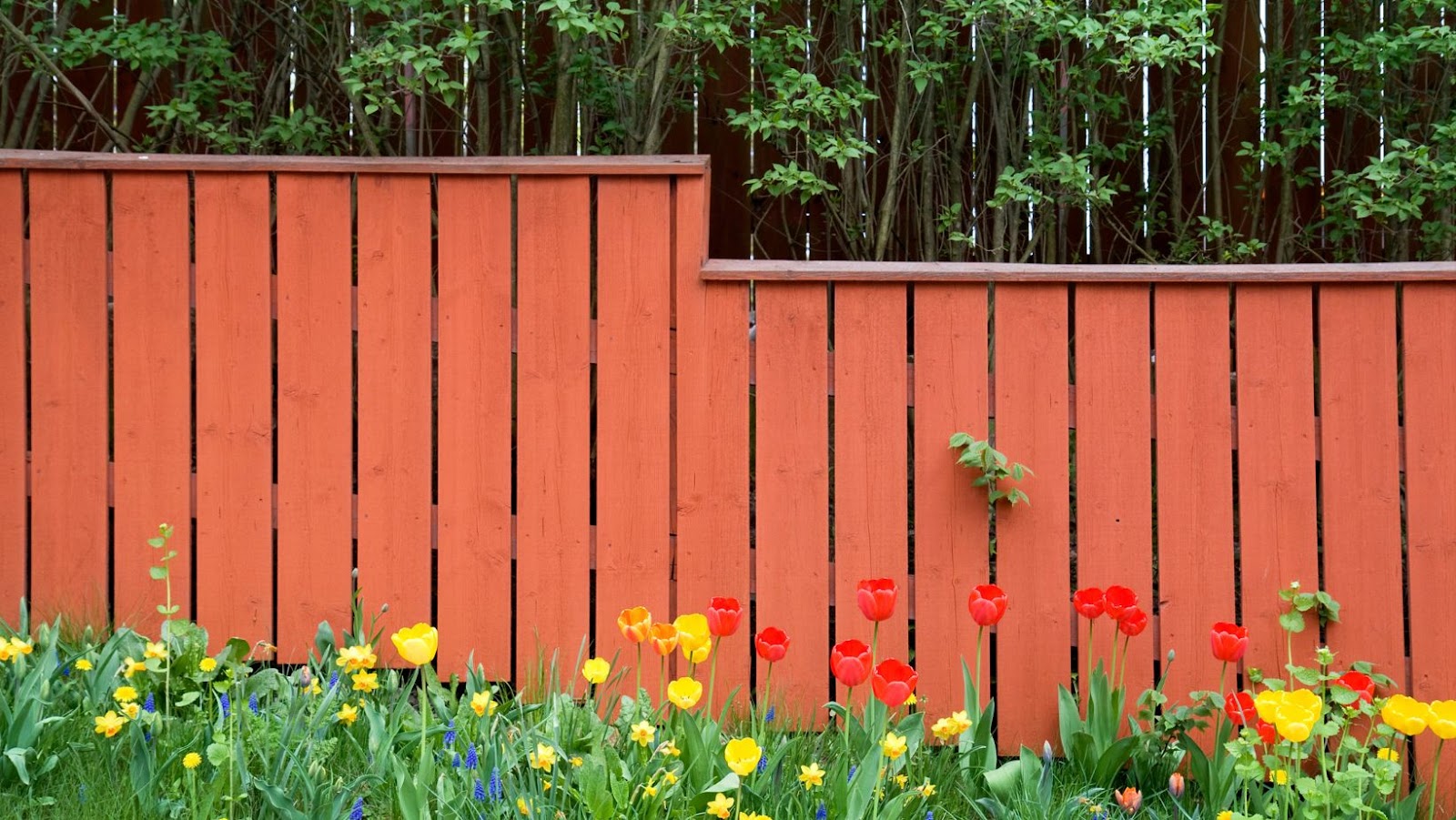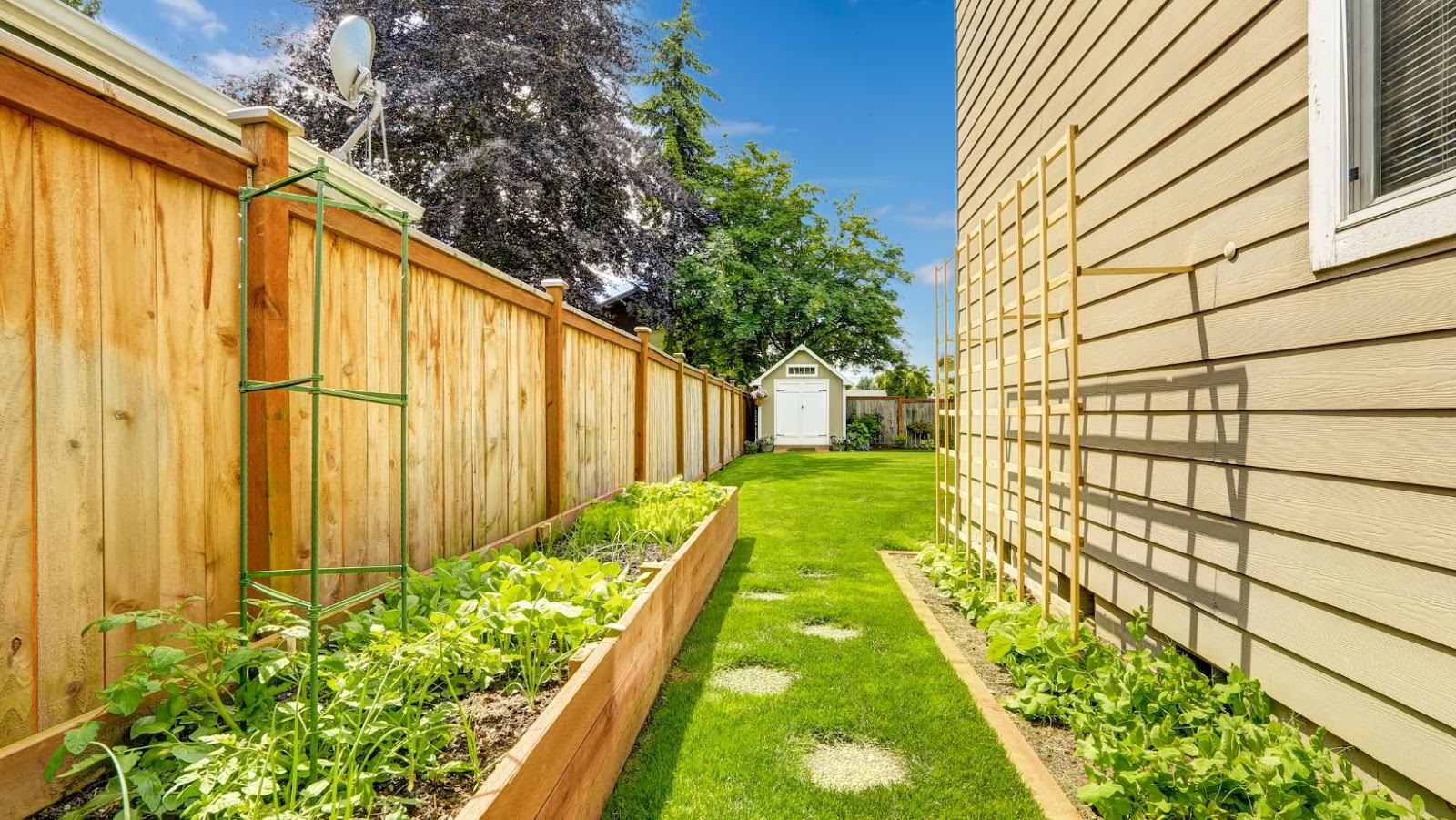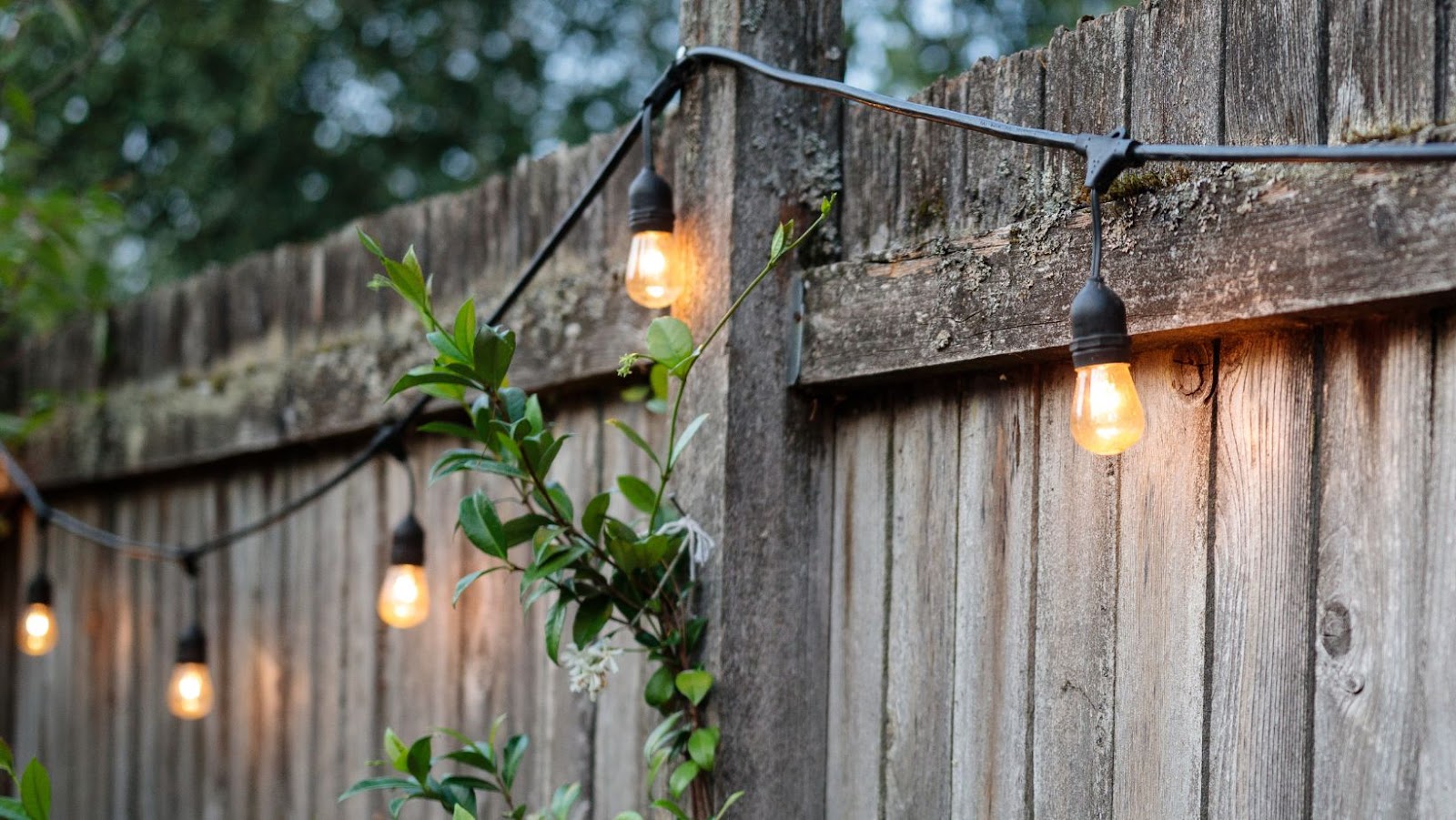
When considering installing a backyard fence, it is important to be aware of the various regulations and laws associated with the size of the fence. A well-constructed fence can add both privacy and value to a property and should always be installed with the required research.
The purpose of this article is to discuss how tall a backyard fence can be and what regulations you should consider when installing a fence:
- Check with local authorities to determine the maximum height of a fence in your area.
- Consider the neighborhood regulations for fences.
- Be aware of any building codes that may apply.
- Be aware of any property line regulations.
Purpose of the fence
Fences are common structures used to extend the boundaries of a property, providing privacy and security for homeowners, as well as serving to identify and protect specific areas of the yard. Different types of fences can be used for different functions, such as security or aesthetic design elements. Understanding the regulations and limitations associated with fences is important before selecting materials and construction plans.
The purpose of a backyard fence may be primarily decorative or utilitarian; it could represent an ornamental design or simply provide an effective barrier from adjacent properties. When constructing a backyard fence on your property, you will need to take into account zoning regulations and laws governing height restriction. Generally speaking, local zoning regulations dictate that fences can be up to six feet tall in most residential neighborhoods; however, check with your local municipality as different states have different regulations defining acceptable fence heights in residential areas. Additionally, if your backyard is near a pool, additional restrictions and height limits may become applicable due to inherent safety concerns.
How tall can my backyard fence be
When building a backyard fence, it’s important to understand the regulations and rules that come with it. Depending on your location and the type of fence you want to install, the regulations for your fence may vary. Fence heights, for example, are regulated to maintain safety, privacy, and noise reduction.
Let’s learn more about how tall your backyard fence can be:
Zoning regulations
It is important to consider local zoning regulations before building a fence in your backyard. This will help you determine the height your fence can legally be, as well as any other restrictions you must abide by. In most communities, there are specific rules which govern how tall and tall of a fence you may build in your backyard.
Fence heights typically range from 3 feet to 8 feet tall. Depending on your zoning regulations, these heights may differ where you live. Based on the zoning for your area, some fencing may not be allowed at all such as lattice or picket fencing over 4 feet tall or solid walls over 6 feet tall.
Additionally, fences may need to meet certain criteria such as:
- side yard setback requirements not being blocked by the fence;
- no corner visibility triangles being obscured;
- having openable gates with self-closing latches or locks;
- no barbed wire along the entire length of the fence line.
It is also important to obtain any necessary permits prior to constructing or replacing a backyard fence; these permits usually require an inspection of both the existing and proposed fences to make sure all local regulations are met. To ensure compliance with local laws and building codes, it’s best to contact your city’s zoning office for additional information about constructing a backyard fence that meets zoning regulations in your area.
Building codes
In most urban areas, building codes determine how tall a backyard fence can be. Generally, fences in residential neighborhoods may not exceed six feet in height, while fences built on sloped land may be up to eight feet tall in certain areas.
Fence height is typically measured from the highest natural grade of the ground directly adjacent to the fence. It’s important to note that no matter how high your fence is, it typically cannot be taller than an adjoining structure such as a house or shed. Additionally, many cities and counties set limits on the number of pickets per linear foot, and require that fences meet local setback rules regarding their placement.
Neighbors should also consider fencing options that maintain line of sight across property lines so that fire department personnel have ready access to the exterior of all homes in cases where visual inspection is necessary during emergency situations or extinguishing fires.
For more specific details on when and how tall your backyard fence can be constructed depending on location, you may need to:
- Analyze your city or county’s building code regulations
- Contact your local municipality for more information.
Types of Fences
Fences are an important part of any backyard and are used for privacy, security and even aesthetic purposes. There are many types of fences available, each with their own design, height and material requirements. Depending on where you live, the type of fence you choose may be limited by local laws and regulations.

In this article, we will be looking at the different types of fences and how tall they can be:
Wood
Wood fences are traditionally the most common material used for both residential and commercial fencing. Wood is a versatile material that can provide strength, privacy, protection from the elements, and aesthetic balance to your landscape.
When deciding how tall your backyard fence should be, you have to factor in local zoning regulations as well as regulations within your homeowner’s association (if applicable). Generally speaking, the maximum height of a backyard fence is usually 6 feet tall, depending on where you live. However, with permission from local municipality or other governing bodies it is sometimes possible to build higher fences depending on your need and purpose.
Although there are several types of wood available for fencing such as cedar and redwood, pressure-treated lumber is the most commonly used type of wood because it resists rot and decay and is cost-effective when compared to other options. Pressure-treated timber also holds up against weathering better than other woods without requiring additional treatments over time.
Additionally styles may vary from:
- Picket fences which are ideal for privacy or adding an ornamental touch to your space.
- Board-on-board fencing for greater privacy between neighbors.
- Solid board fencing to make sure no livestock or pets wander off or intruders enter without permission.

Vinyl
Vinyl is a popular choice for backyard fencing because of its affordability, low maintenance, and longevity. It is a modern-looking fence choice that comes in many styles, color choices, and heights. The height of vinyl fences can vary from 2–6 feet and can also come with lattice or picket accents to add a decorative flair to the design. Vinyl fences are strong enough to contain dogs and other pets, but may not be best for large animals unless reinforced with welded wire fencing.
In some areas it will require a building permit if your fence exceeds certain height restrictions. It is best to check with your local municipality before installing your vinyl fence.
Chain link
Chain link fences are a popular choice when considering backyard fencing because they are strong, durable and require a minimal amount of maintenance. They are also cost effective compared to other types of fencing.
Chain link fences come in different heights and can be used to create privacy or keep small children and pets contained in the backyard. Generally, residential chain link fences have a maximum overall height of 6 feet but may vary based on the local jurisdiction’s building codes. The mesh size can also vary depending on the purpose of the fence. Posts for chain link fences typically measure 2 3/8 inches or 2 7/8 inches in diameter for residential use depending on the fence height, with larger posts needed for taller fences.
Chain linking is usually made from galvanized steel and can be covered with vinyl sleeving to add aesthetic value or additional security to the fence line.
Height Restrictions
When it comes to fence height restrictions, it’s important to know the regulations for your particular area. What may be legal in one city may not be legal in another. Knowing the height restrictions for your backyard fence can help you keep your fence in compliance with local laws and regulations.
In this article, we will discuss various aspects to consider when determining how tall your backyard fence can be:
Maximum height
The purpose of fencing regulations is to ensure that fences in residential areas are appropriate for their surroundings and offer consideration for the neighboring property. Each local council may have its own specific regulations but generally the maximum height for a backyard fence is 2.4 meters, with the exception of one meter high obstructions near pools or around chainsaw use areas.
It is also a good practice to check with your local council before making any decisions on fence height as some councils may have restrictions greater than what is legally stipulated by law. It’s also important to be certain that your fence will not cause any potential safety hazards such as blocking out light in dark spaces or potential fire risks in drier climates.
Lastly, it’s important to be mindful of limits to neighboring properties and do your best to find a compromise if necessary, as discussions about renovations between neighbors can become prickly very quickly.
Local ordinances
When deciding how tall your backyard fence can be, there are a few important factors to keep in mind. You need to consider building codes and local ordinances before you begin your work.
The first step is to contact your local government office or buildings and safety department. They will be able to provide you with exact figures or recommendations based on the area you live in. Local prohibitions vary from town to town, so it’s always best to investigate rather than take an amateur’s advice. Additionally, some regions have maximum height limits, while others focus on encroachment onto public lands.
In many zones, homeowners are allowed to install fences up to six feet in height without any special permits; however, this isn’t true in all areas. It’s also important to note that if one of your neighbors has a higher fence than yours and it’s still within ordinance guidelines that they could maintain their fence – even if it obstructs your view.
It’s worth the effort of finding out the specifics before building a fence too tall or too short for code compliance – not only will it save you money but also time and energy expended unnecessarily because fences have become non-compliant with local laws or restrictions imposed by other bodies such as HOA boards. Make sure you check out mandatory regulations before getting started!
Benefits of Fences
Putting up a fence in your backyard has several benefits. Not only does it help with privacy and security, but it can also improve the aesthetic of your home. It can even help keep small animals from entering your yard.
One of the most common questions when considering backyard fences is how tall can they be. Let’s take a look at the rules and regulations that govern fence height.
Privacy
Not only can fences make a backyard look more attractive, but they also provide an effective measure of privacy. An enclosed yard is more difficult to trespass and provides a measure of safety and security. Fences can also help to shield occupants from outside noise, wind, and dust as well as visual distractions such as if you’re situated on a busy road or nears public park.
The privacy factor also comes into play in terms of how tall the fence should be. Generally speaking, it is recommended that you choose a height that is at least 6 feet tall for maximum privacy. In some cities and towns, local zoning ordinances restrict the height of your fence so it’s important to make sure you are aware of any local requirements before construction begins. Additionally, most insurance providers will require that your fence meets certain specifications building codes for added security should an incident occur on your property.
Security
Installing fences can provide substantial benefits for homeowners, especially those concerned with safety and security. Fences provide an effective barrier to entry, making it harder for trespassers to get in or out of a property. Additionally, several studies have shown that installing a fence at home leads to lowered crime rates and incidents of vandalism.
Depending on local regulations, fences can also be used to indicate the boundaries of a property and announce to passers-by that there is a private space beyond that only invited visitors should enter. Many high-security fences also feature alarm systems capable of alerting the owner or other security personnel when movement is detected near the boundary line.
On top of increasing privacy and loosening restrictions on activities such as swimming pool use for barbeques, yard barking dog control, adding visual appeal to landscaping combination maximize backyard space well maintain a lot’s maximum height zone requirements keeping in consideration neighbors privacy concerns can be many advantages associated with erecting a fence around your home. The right type and height selection will always depend on your specific needs; however, it’s important for any individual looking into building one around their backyard to understand exactly how tall their backyard fence can be in accordance with local ordinances and codes.
Conclusion
Understanding the purpose of your fence is the key to knowing how tall it should be. The most common heights vary by jurisdiction and should always be confirmed with local authorities before installing a fence. Pool fences may also have additional rules and regulations, such as self-closing latches and other safety features, so check with your pool contractor as well.
In most areas, a 6-foot-tall fence provides enough privacy for a typical residential backyard. If you are looking for added security or a more secure feeling in your yard, consider increasing the height of the fence to 8 or even 10 feet tall. However, take into account that high fences can create shadows and make a small backyard seem even smaller.
If you’re planning on installing a fence or replacing an existing one in your backyard, it’s important to keep in mind both local regulations and personal preferences when deciding on how tall you want it to be. Ultimately, you need to find a balance that will provide adequate privacy for your family’s needs while still meeting any necessary requirements set by state or local law.





